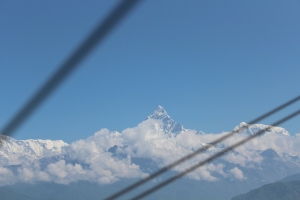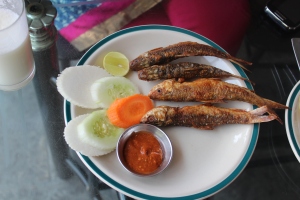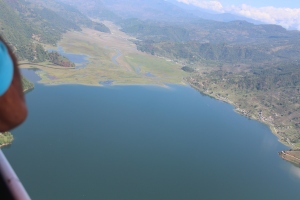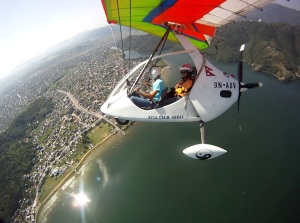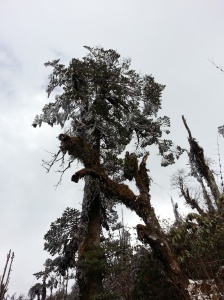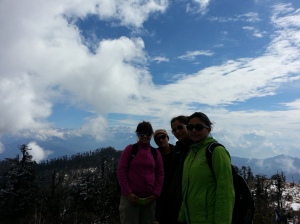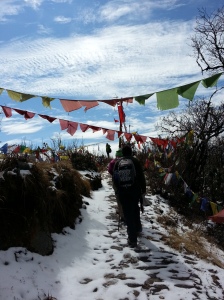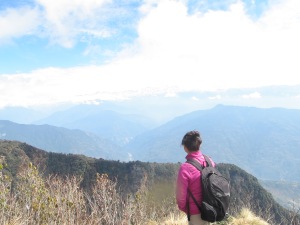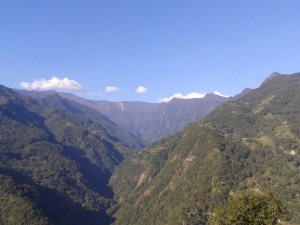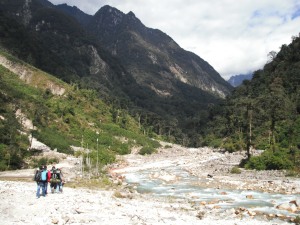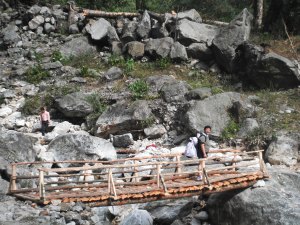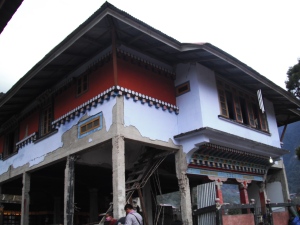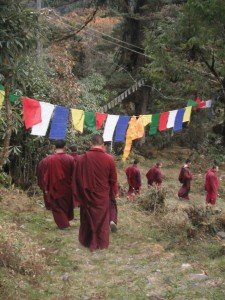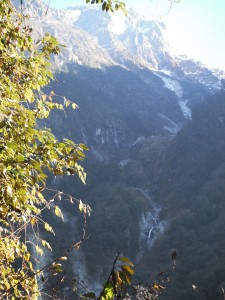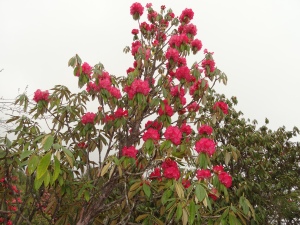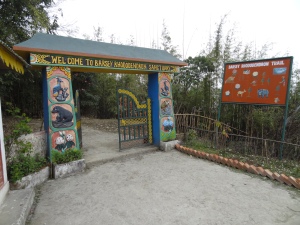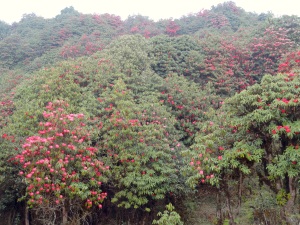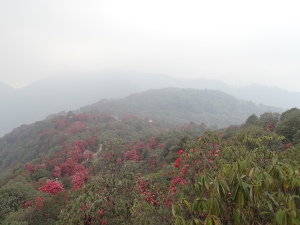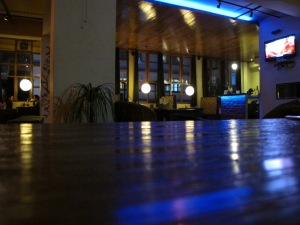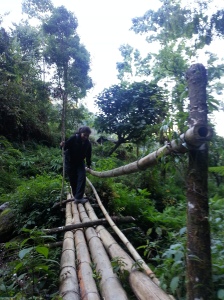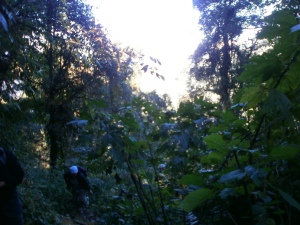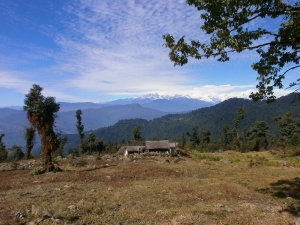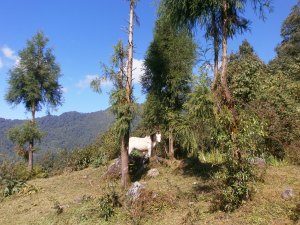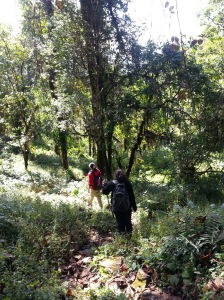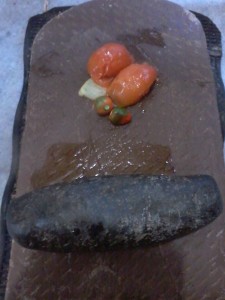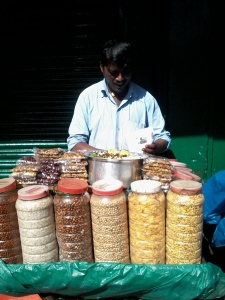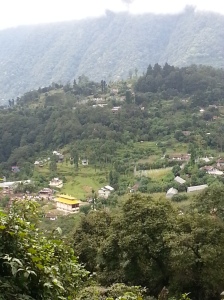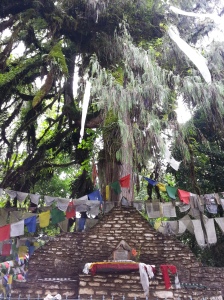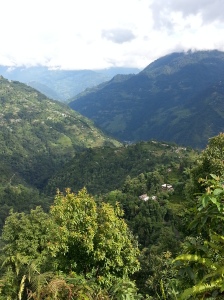A three days trip to Pokhara was the perfect break I needed after a hectic few months. A 20 minutes flight from Kathmandu to Pokhara just gives you enough time to enjoy the free coffee and candies. It is a nice change from having to buy everything, as is the case in Indian domestic airlines. However, the tiny 30 seat aircraft does make one feel jittery.
Pokhara is the 2nd largest city of Nepal, surrounded by the Annapurna range it is a popular destination for trekkers and adventure sports enthusiast.
The first day we decided to stay at the Raniban Retreat, though just 5 km away from the main town, it feels like it is miles and miles away from the bustle of the city. The hotel is so placed that it gives you the best view of the mountains. However, it is not for people who have difficulty walking, as one has to walk for 10 minutes to reach the retreat. If you are looking for a place with loud entertainment, this is definitely not the place for you, but for someone looking for peace and quite this is the place to be. Before heading towards the hotel, we did some sightseeing, the taxi we had hired for the day took us to places like the Bindhyabasani Temple, International Mountain Museum, Gupteshwar Gupha. I found the Gupha or cave to be really interesting, thousands of years of erosion has given the stone walls very unique texture and feel. We had our lunch at a local Thakali restaurant. Thakali cuisine originated in the hills of Mustang, and uses a lot of Szechwan pepper (locally known as timmur).The fresh fish fried Thakali style was yummy. The main course consisted of dhindo (buckwheat flour cooked in water) dal, rice, saag, gundruk (a Nepali delicacy) and chicken. After a scrumptious lunch we headed towards the retreat, where a potter was waiting to carry our bags for the 500 or so steps one has to walk. The stay that night was utter bliss, although the next morning was foggy and we could not enjoy the sunrise over the mountain range. I will definitely go back to the place just for the peace, quiet and utterly magnificent view.
The next day after a leisurely breakfast; we headed towards the main city, stopping to visit the world peace pagoda. We checked into The Lake Side Retreat, a plush hotel near the Phewa Tal. The spa service was good and I totally enjoyed the hour long ayurvedic massage. The evening was spent walking along the lake side area; which offers multi-cuisine restaurants, pubs and curio shops. A very touristy area where you can buy souvenirs for people back home. Some of the restaurants have live band performing, so it is a great place to hang out and have fun.
Coming back home without trying any of the adventure sports on offer would have been a crime. Since we were there only for 3 days, I had the option of either trying paragliding or ultralight flight. Having already done parasailing once, I opted for ultralight fight. The Avia Club has been offering ultralight flight for more than 17 year, so they are the people to go to. The hotel helped us with the booking and offered us some discount. It was a fantastic experience, the day was very clear so I could see the complete mountain range. The wind blowing across your face, a single engine light aircraft and a big lake below you does make one feel jittery. However, when my 15 minutes were over, I felt I should have taken the ½ hour package.
They also offer you a video footage and photograph of your flight on payment of 25$ or INR 1500.
The 2 nights and 3 days passed in a jiffy, I would definitely want to go back, especially now that I have heard of far off places like Mustang , Jomsom and the ABC trail, but that will be another story to tell.
Note for Indian nationals: Do not carry Indian currency in denominations of 1000 and 500 , it is not accepted anywhere in Nepal only Rs 100 is accepted.
Respect the local custom, culture and people.
Vidya

